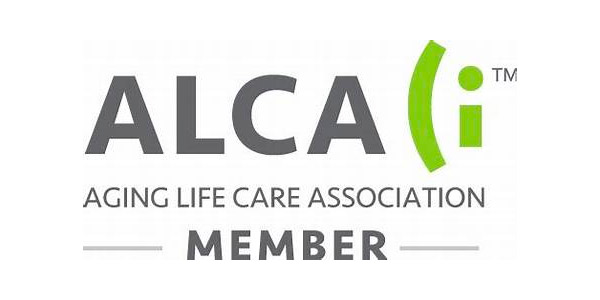Paxlovid Cuts Covid Death Risk. But Those Who Need It Are Not Taking It.
With Covid deaths rising to about 1,500 per week, researchers question why Paxlovid use has remained low among high-risk patients.
High-risk patients who took Paxlovid early in their illness saw a 73 percent reduction in their risk of dying from Covid, but only 15 percent of eligible patients take it.Credit…Wolfgang Rattay/Reuters
Published Jan. 4, 2024Updated Jan. 7, 2024, 10:29 a.m. ET
As Covid rises again, killing about 1,500 Americans each week, medical researchers are trying to understand why so few people are taking Paxlovid, a medicine that is stunningly effective in preventing severe illness and death from the disease.
A study of a million high-risk people with Covid found that only about 15 percent who were eligible for the drug took it. If instead half of the eligible patients in the United States had gotten Paxlovid during the time period of the research, 48,000 deaths could have been prevented, the authors of the study, conducted by the National Institutes of Health, concluded.
It’s not because people don’t know about the drug — most do — but the reluctance seems to come from doctors worried about interactions with other drugs and people wary of a possible rebound case or the metallic aftertaste.
Regional differences offer a clue, with uptake highest in the Democratic strongholds of the Northeast and Pacific Northwest regions of the United States and lowest in deep red areas including Florida and Indiana. Yet no careful study has clarified why so few people used the medication, which cut the risk of death by 73 percent for high-risk patients in the N.I.H. study.
“I don’t know why there is such variability and why uptake isn’t higher across the board,” said Dr. Josh Fessel, a senior clinical adviser on the National Institutes of Health team that studied the drug’s use. “If you can take Paxlovid and you do take Paxlovid within the recommended time frame, the likelihood of death or hospitalization are significantly reduced. That’s a big deal.”
Covid deaths have been elevated since September at about 1,200 to 1,300 deaths per week, inching up to about 1,500 per week in December. Researchers say they will most likely continue to rise unless more people get the updated Covid vaccines and antiviral treatments.
Dr. Fessel said that over the course of the entire million-person N.I.H. study, about 10 percent of high-risk patients eligible for Paxlovid took it, though the rate rose to about 15 percent toward the end of the study period in early 2023. All told, the N.I.H. authors estimated that about 135,000 hospitalizations and 48,000 deaths could have been avoided if half of the patients eligible for the antiviral got it.
Paxlovid, made by Pfizer, is a two-medication treatment meant to be taken within five days of the onset of Covid symptoms to quash viral spread within the body. It was approved for adults who are at high risk for severe Covid, which tends to include those 65 and older and people with diabetes, obesity, asthma and other conditions.
Federal officials still have more than one million free doses out to pharmacies, but officials have handed distribution of the drug off to Pfizer, which has priced it at $1,400 per course.Credit…Pfizer, via Reuters
Reasons for not prescribing or taking it have varied: Doctors balk at the long list of medications not to be mixed with Paxlovid, including common drugs meant to lower blood pressure or prevent blood clots. Patients tend to complain about the drug’s metallic aftertaste. Many wave off the drug in the early days of Covid, when symptoms tend to be mildest, bypassing the chance to limit early viral growth.
“They want to wait and see if things get worse, but if you wait and see it’s not effective,” said Dr. David Gifford, chief medical officer of the American Health Care Association, which represents nursing homes. People think, “‘It’s just a cold and I’ll tough it out,’” he said. “And that needs to change.”
Price has also become a factor. The federal government provided the five-day course of the medications at no cost in the months since its initial emergency authorization in December 2021. (The Food and Drug Administration fully approved the drug in May.) Federal officials still have more than one million free doses out to pharmacies, and the medication will be free through 2024 for Medicaid and Medicare patients. But in recent weeks, officials have handed distribution of the drug off to Pfizer, which has priced it at about $1,400 per course, though private insurers are expected to cover some portion of the price and Pfizer is offering co-payment assistance.
No study has looked at the effect of the handoff. The N.I.H. study period ended early last year. It found wide regional variation in Paxlovid use, with as many as 50 percent of eligible patients getting the medication in Utah and in the Northeast and Northwest regions of the United States. However, rates dipped close to zero in states in the Southeast and in parts of the lower Midwest.
Dr. Fessel, of the N.I.H., said he would be curious to see if concerns about so-called Paxlovid rebound contributed. The misgiving has been that the medication dampens symptoms initially and then leads to a second stage of illness.
In a recent review of studies, the Centers for Disease Control and Prevention found “no consistent association” with Paxlovid use and Covid rebound. Studies show rebound can also happen without treatment.
Denis Nash, a professor of epidemiology at the City University of New York, has also been studying Paxlovid use. In a far smaller study, his team also found uptake of the medication at nearly 14 percent, though lower among some, including 7 percent among people who are Black and nearly 11 percent among those with the lowest income levels.
He said his team worked on a nationally representative survey of 4,000 people to dig deeper (results have not yet been published or peer reviewed). One interesting finding, he said, was that awareness of Paxlovid was high — with about 80 percent of respondents saying they knew that it was available.
Yet respondents showed a lack of recognition about their own risk: Only about one-third of people older than 65 considered themselves to be at high risk for severe Covid, even though the C.D.C. considers all in that age group high risk. The finding was similar for patients with asthma or diabetes, though half of patients who were overweight or obese recognized their risk.
“People don’t necessarily perceive themselves to be at risk,” Dr. Nash said.
Another recent study found that starting Paxlovid very early, or on the first day of symptoms, improved odds of survival or avoiding hospitalization, compared with starting the drug a day or two later.
Studies have also looked at the use of another antiviral drug, molnupiravir, made by Merck, which was less effective and is used less frequently. Gilead, which makes the antiviral infusion remdesivir, is also studying a Covid antiviral pill called obeldesivir and plans to seek F.D.A. approval. The N.I.H. is studying yet another antiviral option, ensitrelvir, by the company Shionogi that also appears to reduce duration of the illness.
Researchers have also reported low Paxlovid use in nursing homes, given the risk patients face of serious illness or death. About one in four nursing home residents got an antiviral prescription to treat Covid by the end of 2022, a study found. The data showed that the rate rose to closer to one-third of nursing home residents by May 2023, said one study author, Brian McGarry, a University of Rochester assistant professor of medicine.
After that, federal officials stopped asking about Paxlovid use in their weekly nursing home Covid questionnaire.
“I think things are a little bit better,” Dr. McGarry said, “but at the same time, facilities are now dealing with Covid, plus R.S.V., plus flu.”
A correction was made on Jan. 7, 2024
An earlier version of this article misspelled the name of the pharmaceutical company that makes the medication ensitrelvir. It is Shionogi, not Shinogi.
When we learn of a mistake, we acknowledge it with a correction. If you spot an error, please let us know at [email protected].Learn more
Christina Jewett covers the Food and Drug Administration. She is an award-winning investigative journalist and has a strong interest in how the work of the F.D.A. affects the people who use regulated products. More about Christina Jewett
A version of this article appears in print on Jan. 5, 2024, Section A, Page 1 of the New York edition with the headline: Few Take Paxlovid, Even as Covid Surges Again. Order Reprints | Today’s Paper | Subscribe



